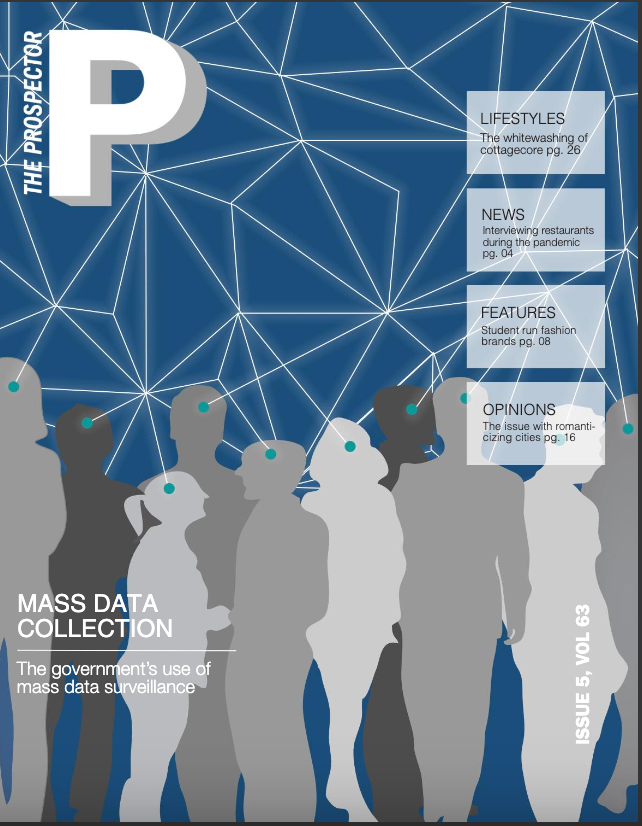Subliminals and Manifestation
October 12, 2021
So there you are, lights dimmed, candles lit, crystals lined across your bedroom window as you get ready to lay down to bed and play the “Abs in a Week” subliminal for the third time today. Deep down, you know that you aren’t going to wake up with a stomach like Madison Beer but still, you play it anyway. Across the street, an anxious sixth grade girl is scribbling her crush’s name 105 times in the journal she begged her mom to buy from Target. Down the corner, a banker tired of his routine 9 to 5 dreams so vividly of white sandy beaches in Cancun (pina colada in one hand, sunblock in the other) that you would think he lives there.
Subliminals, manifestations, visualization: all concepts that have been around for centuries, things we do in our daily lives, but rising trends have shifted the general goals. We are not manifesting only for positivity anymore, but to wake up with 90-degree shoulders and fantasized romances.
Each method stems from the law of attraction, the belief that both positive and negative thoughts directly impact the experiences in a person’s life. If done in the right way, the overall process is generally beneficial, bringing a positive mindset and perspective. For example, for someone struggling with self-image issues, the psychological response from saying “I love myself” or “I am worthy of happiness” can potentially alter their self-perception positively over time.
Manifestation is murky territory, with no clear guidance or regulation… Followers are free to interpret the trend however they’d like, and take advice from anyone labeling themselves as an expert.
— Thea Gallagher (director of the outpatient clinic at the University of Pennsylvania)
On the flip side, while many people may manifest as a joke with little expectation for any real outcome, the trends across the internet with subliminals for “get skinny in two weeks” or “have toned legs in a week” can be deluding. People profit from exploiting insecurities in their target audience that are often based on unrealistic or glamorized beauty standards. Such subliminals not only enforce toxic mentalities and horrible self-image but place more value on features associated with certain ethnicities or races. Youtube headlines of “get a smaller nose” or “have a Korean body” are now on many screens. While these beauty standards have existed long before, using subliminals for such purposes can put an unhealthy amount of emphasis on them. It is undoubtedly harmful that the media we consume on a daily basis pushes certain groups to seem as if their physical appearance is greater. But it is further damaging when those vulnerable or insecure go about trying to achieve them, believing that it is necessary in any way.
With social media, “manifestation is murky territory, with no clear guidance or regulation… Followers are free to interpret the trend however they’d like, and take advice from anyone labeling themselves as an expert,” said Thea Gallagher, director of the outpatient clinic at the University of Pennsylvania’s Center for Treatment and Study of Anxiety.
The problem lies in the definition of the law of attraction itself, where the outcome of your life is a direct reflection of what thoughts you put in and what you deserve. Unfortunately, the expectations that can come when performing acts with the law of attraction are high. If not met, it can be a question of “well, what did I do wrong?”, “how come I’m not good enough?” It pushes the idea that one brought it on themself or that bad things only happen to bad people. Life happens, and bad things are going to happen no matter how much one can visualize or manifest, and that’s no surprise.
Gallagher warns that manifesting can be harmful to people with anxiety. Said Gallagher, “[In therapy] we work a lot on helping people separate their thoughts from actual reality, especially the negative ones.” Some of her patients have struggled with intrusive thoughts. For example, if they think something bad is going to happen, such as seeing burning down a building while visualizing, they’ll accidentally cause it to happen in real life.
“This illustrates how the very idea of manifesting is ‘sticky’… a slippery slope that could lead to or exacerbate obsessive thoughts”, said Angela Haupt, writer for The Washington Post.
Obsession can be not only with certain objects or outcomes but with people. The initial innocence of using subliminals to get a new pair of sneakers is replaced with “how to get your ex obsessed with you.” Not only is it unhealthy to feel the need to control entire human beings, but can be enough to set one further down the obsessive route.
The idea that we can control our lives through our thoughts just by listening to the right frequency, visualizing the future, or doing things the right number of times is alluring. While the general practice of the law of attraction or any similar method done correctly has the potential to elevate a person’s mindset, the changes and toxic ways in which it is used bring more concern than benefit.

























